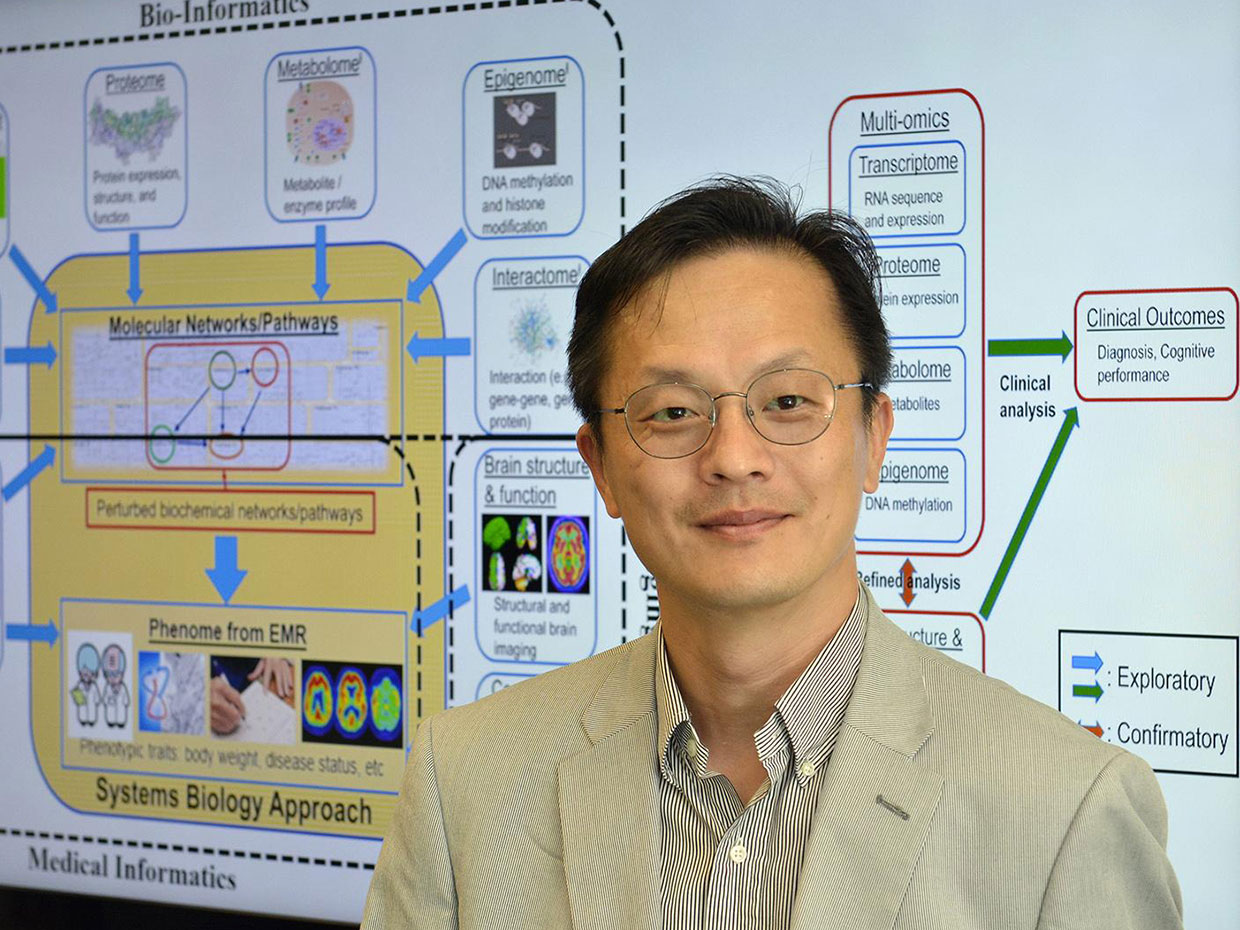IEEE The Institute: Software Could Help Predict Alzheimer’s Risk Years Before Symptoms Appear
Signs of Alzheimer’s disease can include repeatedly losing things, asking the same questions over and over, getting lost in a familiar neighborhood, and even hallucinating. But according to the U.S. National Institute on Aging, damage to the brain likely begins at least a decade before such cognitive symptoms begin to appear.
IEEE Member Sungeun Kim is developing a computer program to examine massive patient data sets to predict the onset of diseases such as Alzheimer’s—which could pave the way to identifying people for early treatment as well as more effective medications. Kim received a US $119,000 grant from the National Institutes of Health to develop the program.
He is an assistant professor of electrical and computer engineering at the State University of New York in Oswego. He’s also an adjunct assistant research professor at the Indiana University School of Medicine, in Indianapolis, where he has worked on projects related to Alzheimer’s, Parkinson’s, and other diseases exhibiting progressive dementia.
In this interview, The Institute asked Kim about his program and how big data is likely to affect the future of medicine.
How will your software detect Alzheimer’s before symptoms appear?
It will examine such things as genetic data, MRI images, and neuropsychological measurements. Over the years, data has been collected from many individuals with both normal cognition and neurodegenerative diseases through several Alzheimer’s disease research projects supported by the National Institutes of Health and partnering companies. We are essentially looking for differences between those two groups.
In the early stages of neurodegenerative diseases, any changes in brain structure and function is subtle. It’s difficult to detect these changes with confidence, but they sometimes begin to occur decades before clinical symptoms appear. If we can successfully identify people at risk, this early diagnosis may increase our chances of slowing down or stopping the progression of the disease before brain cells are irreversibly damaged.
Could your system detect the onset of other diseases besides Alzheimer’s?
More research is needed, but once this program can perform an early identification of people at risk, it could be applicable to different types of neurodegenerative disorders, as well as other diseases. The methods are general enough to be applied to a host of conditions.
How long have you worked on applying big data to detect disease? What drew you to this area?
I have been working in this field for seven years; my latest project began last July. At the beginning, I was curious about the structure and function of the human brain. That curiosity motivated me to study neuroscience, and this knowledge, combined with the analytical skills I gained as an engineer, led me to study Alzheimer’s and Parkinson’s diseases from a data perspective.
What is big data’s place in the future of medicine?
Patient data contains lots of information about both the normal and abnormal functioning of organs in the human body. Such data provides opportunities as well as challenges. We often compare our work with finding needles in haystacks because of its complexity and the nature of big data having too much information, much of which is not relevant to what we’re looking for. However, if we can efficiently and wisely analyze the data, we should be able to diagnose diseases sooner and more effectively.
Read the full interview on IEEE The Institute here.






